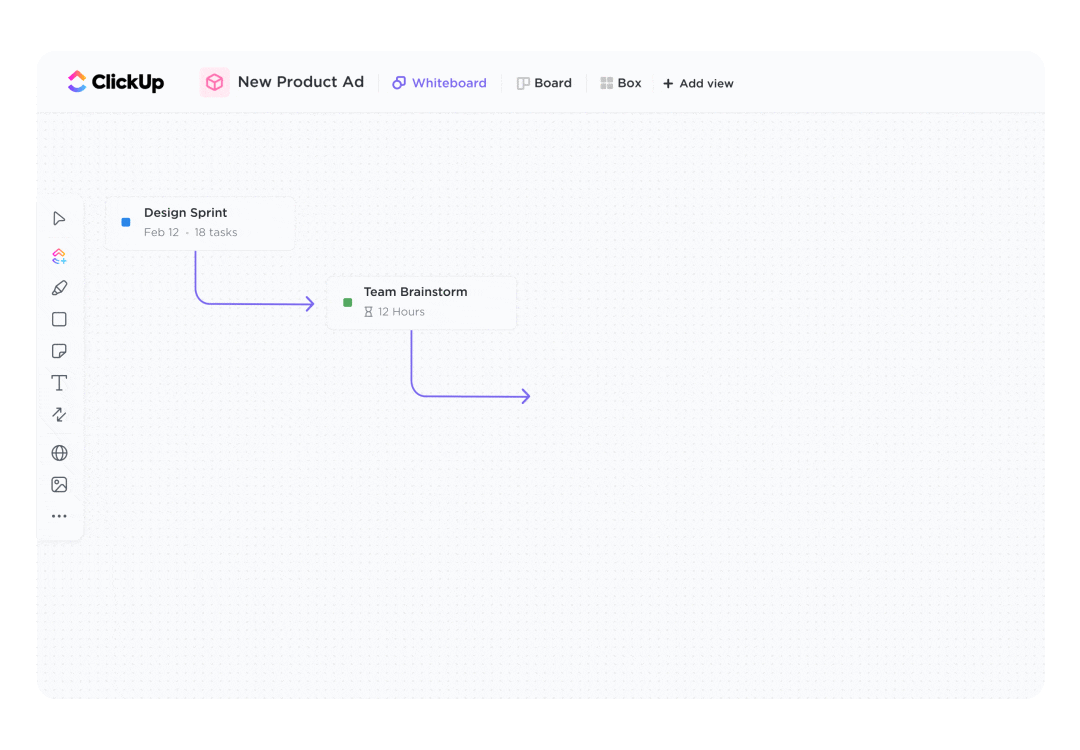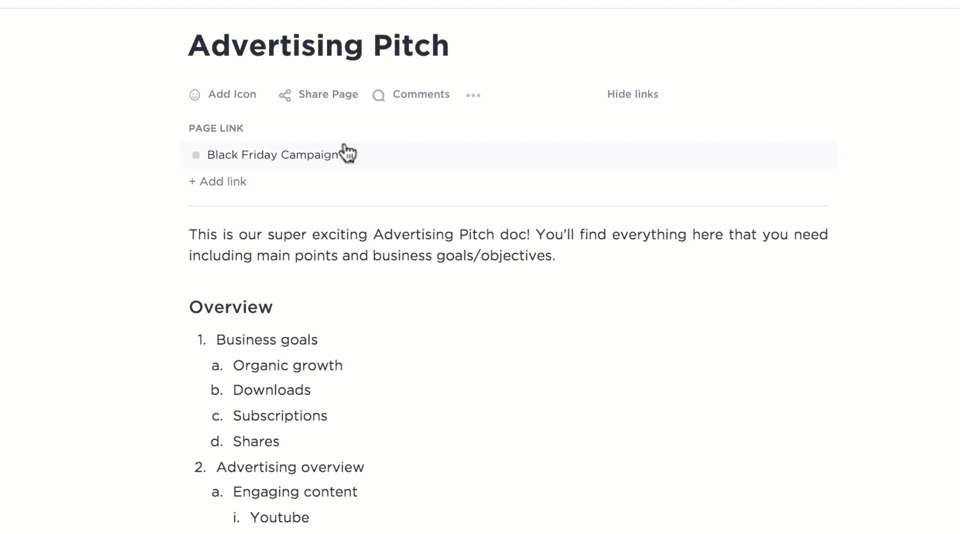How to Build a Product Development Process (With Examples)

Sorry, there were no results found for “”
Sorry, there were no results found for “”
Sorry, there were no results found for “”
Ever wondered what it takes to bring an idea to life? The product development process covers the steps that take you from idea to market.
It works as the framework to get you through the iteration, testing, and ideation phases so that you don’t get lost in the weeds.
In this guide, we’ll explore its importance in driving business success, dive into the differences between product development and product management, and provide you with an in-depth understanding of the entire process.
Let’s start with a definition, shall we?
Product development is the process of creating, designing, or refining products that meet customer needs and expectations. It’s a critical technique for any business because it involves several key components such as market research, idea generation, concept development, design, testing, production, and post-launch evaluation.
Product development plays a vital role in a company’s success by fostering innovation, maintaining a competitive edge, and ultimately driving revenue growth.
While product development refers to creating the actual product, product management is responsible for guiding the product’s strategy, roadmap, and features throughout the product development cycle.
Product developers are the creative minds behind the product idea and design, ensuring it aligns with customer needs and expectations. 🚀
On the other hand, product managers oversee the overall development process and strategy, positioning, and profitability of the product. The two roles work hand-in-hand to make sure that the entire product development process is efficient and the overall product is well-designed and market-ready.
Manage products and services with these price list templates!
The easiest way to approach the product development process is to break the journey down into steps, which works like a product roadmap of sorts. Understanding your marketing strategy for your final product or the development process (if applicable—your manufacturing process) is crucial to achieving a successful product launch.
Essentially, you want to dissect a complex process into a functional product roadmap that your entire team can get behind. So, let’s start with the first phase of the product development process:
Kickstart your product development process with some creative brainstorming techniques like group sessions, mind mapping, and the SCAMPER method.
Take creative brainstorming sessions, for example. Techniques like mind mapping, group brainstorming sessions, and the SCAMPER method stimulate innovative thinking. Mind mapping helps you visually organize information, making it easier to identify potential product ideas.

Group brainstorming sessions, on the other hand, mix diverse perspectives together, increasing the chances of generating unique ideas. The SCAMPER method (Substitute, Combine, Adapt, Modify, Put to another use, Eliminate, Reverse) encourages you to rethink existing products or a new product concept from different angles.
An essential part of idea generation involves doing your market research. This includes analyzing competitors and finding your target market. Make sure you examine competitors’ product offerings to identify strengths and weaknesses, learn from their successes and failures, and find inspiration for your final product.
For instance, if you notice that a competitor’s product lacks certain features that your target customers desire, you should probably consider incorporating those features into your product development process. Apple’s iPhone emerged as a groundbreaking product because it combined a mobile phone with existing products like the iPod. Their product development process found their target market and addressed their customers’ needs with one device.
Consider that it isn’t always about filling a gap in the market, but also combining elements that haven’t been combined before. Conducting market research also helps pinpoint gaps and opportunities in the market. The product development process begins with using the right software.

Tools like surveys, forms with conditional logic, focus groups, and interviews help you gather initial feedback and valuable insights from your target market. This is great for the beginning of your product development process.
By understanding their unmet needs, preferences, and pain points, you create a solid foundation for developing a product that resonates with the needs and wants of your target customer.
After generating a promising product idea, it’s time to define your product requirements. Develop product requirements documents (PRD) that thoroughly describe the product’s features, specifications, and functionalities.
For example, if you’re designing a new smartwatch, the PRD might include details about battery life, water resistance, compatibility with different types of smartphones, and the types of sensors embedded in the device. Creating a PRD ensures all stakeholders share a clear understanding of the product’s purpose and attributes—no matter if you’re starting new or working off existing products.

Next, evaluate the project’s feasibility by conducting technical, financial, and operational business analysis. Technical analysis involves assessing whether the necessary technology and resources are available to create the product. Financial analysis determines the cost of development and the potential return on investment.
The operational business analysis explores the logistics of manufacturing, distributing, and supporting the product after launch. For instance, when Tesla started developing its electric cars, it had to consider the availability of lithium-ion batteries, the cost of building charging infrastructure, and the logistics of servicing vehicles.
By carefully developing and evaluating a product concept, you lay the groundwork for a quality, foolproof final product that’ll be able to compete in its industry. But it all depends on how you develop your product roadmap to get you to that finished product. So, during the concept product development process and evaluation phase, consider taking your idea through the following:

DOCUMENTING THE ENTIRE PRODUCT DEVELOPMENT PROCESS
Your product development team needs the right documentation and free project management software to log, track, reevaluate, and outline your product development process. Using ClickUp Docs lets you attach tasks, add stakeholders or watchers, and assign comments to help you take a product concept to a successful market launch.
It’s time to create a prototype!
In other words, you’ll need to create a tangible representation of your product ideas. Some might call it your minimum viable product (MVP) depending on your industry.
A prototype makes it easier to see, test, and refine your product design. You can incorporate test user and stakeholder feedback, and it’s easier to identify errors or gaps in your product development process. During the prototyping phase, consider the following:
Stay compliant and confidently tackle any project with the ClickUp Compliance Project Plan Template. Easily identify, assess, and measure compliance requirements while tracking noncompliance and taking action to address any issues. Streamline your compliance program and take the stress out of project management!
Quality assurance and testing are vital for creating dependable products. To ensure your product works as planned, use thorough testing methods to find and fix any defects or issues before you get too deep into your marketing strategy.
You might use different testing methods like stress testing, performance testing, or environmental testing. For instance, if you’re making a smartphone, stress testing checks its durability under tough conditions, while performance testing looks at speed, battery life, and other key features.
Along with technical testing, carry out user acceptance testing (UAT) by having end-users try out the product to ensure it meets their needs. Their feedback helps you make any needed adjustments before launching.

This includes providing your team with the right permissions and access to your product development process or product development tests. With the right project management tool, you ensure your development team has everything it needs to succeed.
Finally, ensure your product is safe, reliable, and follows industry rules and standards. This could mean meeting guidelines set by organizations like the FDA, FCC, or ISO, depending on your product and industry. For example, a medical device maker must follow FDA regulations and get approval before bringing their product to market.
By carefully testing and validating your product, you build trust with customers, reduce potential issues, and set the stage for a successful product launch.
Managing the production process and supply chains effectively is crucial for delivering your product to the market without unnecessary delays or costs. Building strong connections with suppliers, manufacturers, and shipping partners ensures that everything runs smoothly.
Develop engaging marketing campaigns to promote your product and generate interest. Maintain a clear and consistent brand message, and use marketing platforms such as social media, email, blog posts, and public relations to reach your target audience.
Establish distribution and sales channels that are most suitable for your product and industry. Options may include selling directly to customers via an online store, partnering with physical stores, or collaborating with distributors and wholesalers.
By concentrating on production, launch, and distribution, you enhance the likelihood of your product reaching a wider audience and gaining staying power. Check every box of this phase with the help of the ClickUp Product Launch Checklist Template. It includes a Gantt chart, an awesome visual timeline, and all the activities to ensure your launch goes off without a hitch.
You’ve launched your product. But that doesn’t mean that the journey is over. After launching your product, keep an eye on its performance by tracking important measures, indicators, or product management KPIs.
This helps you figure out how successful your product is and where you might need to make improvements. Always listen to user feedback and stay on top of market trends so your product stays up-to-date, competitive, and in demand.
At this stage, managing your product’s lifecycle is key for everyone—including your development team. This means overseeing your product development from the beginning to the end of a product’s life. It’s all about making smart choices about your product’s future based on how well it’s doing, what customers are saying, and what’s happening in the market.
Bonus: Top 10 AI Product Idea Generators!
While there is no one perfect path to product development, there are definitely extra steps you can take to make the most of the process roadmap and give everything to help your development team. Here’s a look at a few:
Cultivate an environment that encourages creativity, experimentation, and learning. This will help your product development team generate groundbreaking ideas and solutions that drive innovation.
Effective collaboration between cross-functional teams, such as design, engineering, marketing, and sales, ensures your approach to product development is well-rounded.
Involving customers in the product development process, from idea generation to post-launch evaluation, helps you create products that truly resonate with your target audience and address their needs.
The ability to adapt to changing market conditions, customer preferences, and new technologies is critical for maintaining a competitive edge in product development. Embrace agility in your processes to stay responsive to change.
While it’s essential to bring products to market quickly, it’s equally important to ensure their quality and reliability. Striking the right balance between speed and quality will lead to long-term success and customer satisfaction.
Lyft, a ridesharing platform, made significant strides in the product development process by analyzing customer needs and perfecting their technological infrastructure. Early versions of their app were fraught with bugs, but with an iterative product development process, they enhanced app functionality, fixing bugs, and adding customer-centered features. For example, they incorporated a price estimation feature in response to customers’ concerns about price transparency, which was quickly adopted by their users.
Canva revolutionized graphic design with its intuitive online design tool. The product development process at Canva involved identifying a clear user pain point – complicated graphic design software. They built a simple and user-friendly product prototype, tested it thoroughly with users, and iterated based on the received feedback. Their continuous evaluation and iteration post-launch permit them to add new templates, features, and improve service constantly. This constant evolution according to user needs makes Canva a classic example of a successful product development process.
We’ve covered the ins and outs of the product development process, emphasizing the importance of following a structured approach and applying best practices. Now it’s time for you to apply this knowledge to your own projects, whether you’re working with a team of five or fifty.
Remember, refining your approach, staying up-to-date with industry trends, and collaborating are the keys to successful product development.
Get started organizing your product development with ClickUp.
© 2025 ClickUp